I ordered a "GE PHS920SFSS Profile 30" Stainless Steel Electric Slide-In Induction Range." I suspect this is nearly identical to the PHB920SFSS (freestanding) for most parts of this review.
I've had it for two months. Since I've found reviews on this website very useful, I thought I'd write my own to help others.
I am a software engineer and will approach the review from a slightly technical angle. I research things to death before buying, and came across many complaints about the various ranges I looked at so will focus on those rather than covering the basics:
Buzzing noise (common complaint about induction): On high heat, a noise similar to a power transformer is emitted. It sounds similar to my previous Magic Chef glasstop electric range, but somewhat louder and more persistent.
The noise isn't noticeable from other rooms, nor is it particularly annoying. My wife heard it but didn't "notice" it until I asked. Not an issue.
Temperature control:
A benefit of induction, like gas, is greater control over temperature. Glasstop ranges simulate "low" temperature by repeatedly running at full power for short periods of time, then turning off.
Unfortunately, the GE does the same thing up to temperature setting 5 1/2 of 10. I can hear it "click" on and off if I pay attention, "on" longer at higher settings.
In practice, this doesn't seem to vary the temperature. Using an infrared thermometer on a dirt-cheap T-Fal frying pan (which doesn't have the thickness or material to buffer temperature variation well), the temperature varied no more than the kitchen counter tiles, i.e., within the error of the thermometer.
Scratches (common complaint about cooktop):
We've dragged numerous pans over the surface, some heavy, like a full 12" Demeyere frying pan. No scratches. That said, I'm sure sand or dirt between the pan and cooktop would not end well.
OVEN:
---
Preheat times (common complaint about GE ovens): The oven seems to preheat slowly compared to previous ovens I've had, but I haven't timed it, so this may be confirmation bias. The display tells you the current temperature, which draws more attention to warm-up time.
Oven racks (my complaint):
The oven racks are not the best. They are difficult to install and remove, and scratch the side of the oven when doing either. I'm a mechanically inclined person and it took me 20 minutes to install the top rack, mainly because it didn't seem to fit so I figured I must be doing something wrong (even though there are only 4 possible ways to install it). The scratches are mostly superficial, but even the junk Magic Chef range that came with the house had no problem with racks.
The top-rack pulls out and it seems to work alright, but has an uncomfortable metal-on-metal grind even after using GE's supplied graphite lubricant.
Convection: Unlike our $99 Cuisinart toaster oven, convection does not appear to "cook faster". While baking cookies, some in center rack and some in bottom,, those in the center rack cooked somewhat faster -- i.e. convection did not magically make everything cook evenly. The GE manual recommends that TWO racks be evenly spaced from the top/bottom, which we did not do (we had one center, one bottom), but that's because as stated earlier, the oven racks are really bad.
Sensor cooking:
I used the sensor to auto-cook a turkey. Turned out great.
Stainless steel:
You can get GE induction ranges in almost any color you want, as they say, "as long as it's stainless steel." We haven't had the occasion to test dent resistance nor have we done any major cleaning, but the GE seems less fingerprint-prone than our stainless LG refrigerator.
---
Controls:
At first glance, the controls look intimidating. Lots of buttons. In practice, they are pretty intuitive. My wife, who is impatient with poorly designed appliances, had no problem.
The controls appear to be capacitive touch glass like a smart phone, but I can't confirm they aren't resistive. Either way, they are responsive and easy to clean. They do have a stainless steel trim piece with a small gap between, so I expect that food will eventually get under the trim piece. That will probably be difficult to clean.
Touching the controls with your arm, belly, or by brushing against them always seems to trigger a button. This does not turn anything on but can turn things off if just the right button is hit. Fortunately you get a beep so can check.
The cook/kitchen timers support minutes only (no seconds), which I like because relevant tasks rarely require so much precision, and it saves button presses.
Performance:
Just like I read, induction ranges heat food far faster and are staggeringly more responsive than standard electric ranges. I timed one pan with the same amount of water on both the old and new range. From cold start, the induction range heats the water to boiling just under twice as fast as the electric (I don't have my timing notes available or I'd give numbers). When turned off, the water stopped boiling in about 1/16th the time. While cooking food, it's as if there's a direct link between the controls and the food -- I lower the temperature, and the food's boiling sounds almost immediately change. I gather this is true of all induction ranges.
You can cook with a paper towel under the pan, you can put spatulas (even steel ones) on the range and never accidentally ruin them, and you can put your hand on a range even right after it has boiled water and not burn yourself (though it does eventually get uncomfortably hot by ironic virtue of heat transfer FROM the pan).
Overall we are very happy with the new GE range and, other than the oven racks, have no real complaints. While induction is fast and has useful features, carefully consider the value of those features to determine whether the alarmingly higher cost. We paid $2,466.88 to HCCost through Amazon.com, or about 2x-5x vs. a standard electric range.
Here is a link that might be useful: GE product page





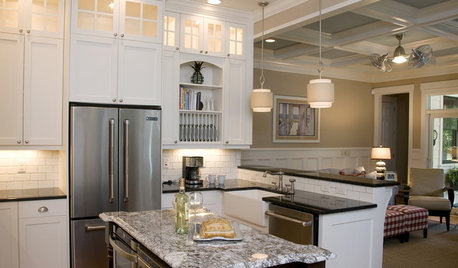
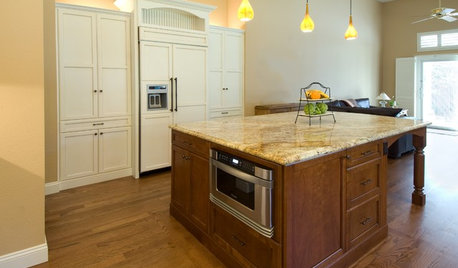
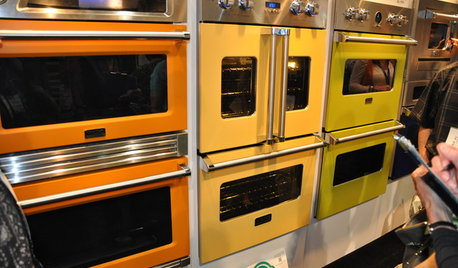
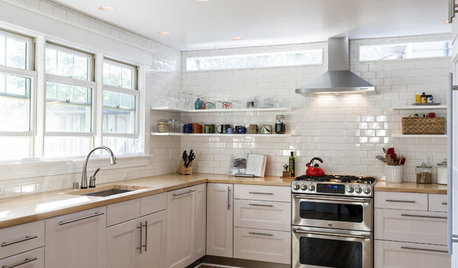
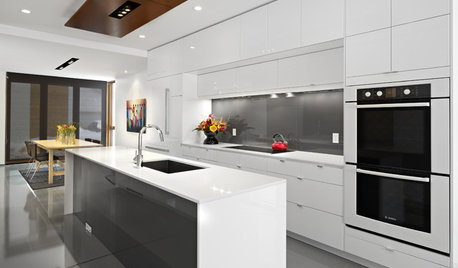








wekick
burncharOriginal Author
Related Professionals
Grafton Kitchen & Bathroom Designers · Haslett Kitchen & Bathroom Designers · Pike Creek Valley Kitchen & Bathroom Designers · Bethel Park Kitchen & Bathroom Remodelers · Hunters Creek Kitchen & Bathroom Remodelers · Idaho Falls Kitchen & Bathroom Remodelers · Kettering Kitchen & Bathroom Remodelers · League City Kitchen & Bathroom Remodelers · Lisle Kitchen & Bathroom Remodelers · Lyons Kitchen & Bathroom Remodelers · Canton Cabinets & Cabinetry · Hammond Cabinets & Cabinetry · Kentwood Cabinets & Cabinetry · Parsippany Cabinets & Cabinetry · West Freehold Cabinets & Cabinetry